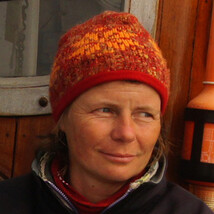Current Projects AG Clastic Sedimentology
DFG-SBH “Reconstruction of the silicate weathering feedback in the mid-Cretaceous high-CO2 world”, S. Voigt, M. Seitz (GU Frankfurt), P. Pogge von Strandmann (UCL London and University Mainz), 2020
Fact sheet mid-Cretaceous Weathing (PDF)
The interaction and secular relationship between tectonic and climatic processes are key issues for our understanding of global carbon cycle variability. The mid-Cretaceous period (130-90 Ma) witnessed elevated rates of continental rifting and oceanic crust production, resulting in increased atmospheric CO2 and pronounced greenhouse climate conditions. Atmospheric CO2 reduction, in turn, is achieved either by organic matter burial, by changes in the intensity of silicate weathering or a combination of both. The lithium isotopic composition of marine carbonates is a proxy for the intensity of the silicate weathering feedback and records secular changes in seawater δ7Li. The seawater δ7Li reflects the balance of sources and sinks controlled by variations in the weathering of continental and oceanic silicates due to the isotopic fractionation during the formation of clays. With this project, we target the generation of a new mid-Cretaceous seawater lithium-isotope curve for the interval between 130-90 Ma to assess the silicate weathering feedback, analogue to the already existing record for the Cenozoic. We will use the archives of bulk carbonate and pristine preserved skeletal calcites (shells of brachiopods, belemnites and bivalves) for which a well-dated collection of specimens exists. The new record includes the two oceanic anoxic events OAE1a and OAE2 as well as intermittent cold phases in the late Aptian/early Albian and Cenomanian and will serve a reference for weathering during extreme greenhouse climate conditions. The main expected deliveries of this project will be: 1) an improved knowledge about the secular evolution of mid-Cretaceous seawater δ7Li values. 2) Information about mid-Cretaceous background δ7Li values to assess its long-term variability relative to OAEs, the seawater strontium-isotope record, and the amount of basalt weathering. 3) New information about the congruency (intensity) of weathering relative to intermittent cold phases and 4) estimates about potential uncertainties in δ7Li relative to different degrees of skeletal calcite preservation and taxon-specific vital effects of lithium isotope fractionation among different calcifiers.
LOEWE-Schwerpunkt VeWA: “Past warm periods as natural analogues of our 'high CO2' climate future”, funded by the Hessen State Ministry for Higher Education, Research and the Arts, coordinated by W. Müller and S. Voigt, GU Frankfurt, since 2020, www.vewa-project.de
- VeWA-Project A3 (Voigt, Marschall, Seitz): Chemical weathering as a sink for atmospheric CO2 - Seawater lithium isotope composition (δ7Li) as a weathering proxy
Project A3 aims at reconstructing the temperature-dependent intensity of silicate weathering as sink for atmospheric CO2 during late Cretaceous climate cooling (95-66 Ma). The lithium isotopic composition of marine carbonates records secular changes in seawater δ7Li and thus reflects relative changes in the weathering of continental and oceanic silicates as well as the isotopic fractionation during the formation of clay minerals. The PhD candidate is expected to perform isotopic and geochemical analyses (δ7Li, 87/86Sr, Δ47, Mg/Ca, Sr/Ca) in marine carbonates, and to develop conceptual models in cooperation with project partners towards a quantitative assessment of the geodynamic and climatic coupling.
- VeWA-Project A6 (Raddatz, Voigt, Ahrens): Seasonal and perennial variations of atmospheric circulation patterns in Eocene marginal seas of mid-latitudes
Within Project A6 it is planned to reconstruct multi-year and seasonal atmospheric circulation patterns from Eocene marine bivalves from different latitudes using geochemical proxies (seawater temperature, δ18O, Mg/Ca, Δ47; Seawater pH – δ11B, B/Ca, U/Ca; Oxygen – Mn/Ca as well as the terrigenous input – Ba/Ca and 87/86Sr).
DFG-SBH “RISE: High-resolution records of environmental change in cold-water coral reefs: geochemical evidence recorded in the skeleton of the marine bivalve Acesta excavata”, Raddatz, Voigt, since 2017
The current rise in atmospheric pCO2 and temperature is a serious threat for marine calcifiers in deep-sea ecosystems. Among these, cold-water coral (CWC) ecosystems are under particular risk, due to their position in cold and deep waters close to the limit of carbonate saturation. One factor poorly explored for the growth of CWC reefs is seasonality. Moreover, to date geochemical research on CWC mainly focuses on framework building corals as environmental archives for which severe vital effects are known. Here, we explore a promising alternative model organism, the large clam Acesta excavata, as a new environmental archive for CWC reef ecosystems. A series of geochemical proxies (δ18O, δ13C, Δ47, Mg/Ca, Sr/Ca, Li/Ca, Mg/Li, U/Ca, B/Ca, δ11B), already established in other marine biogenic carbonates, will be applied with a suite of analytical methods and different sampling techniques. In addition, the geochemical data will be calibrated for the first time to high-resolution in situ oceanographic data (logged via >1 year lander deployments at the sample sites) to overcome vital effects. This integrated approach aims to: (1) identify and evaluate potential vital effects in A. excavata’s biomineralisation. (2) To develop A. excavata as geochemical archive for paleoceanography and age chronometers, (3) to resolve temporal and spatial variations of seasonality in CWC reefs off Norway (Trondheimsfjord) and Mauretania (Banda Mounds), and (4) to access seasonality in the context of latitudinal shifts in CWC reef occurrences on glacial/interglacial time scales.




